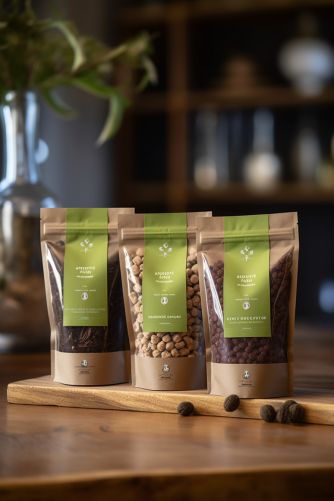Well, more and more consumers are becoming more aware of what effects they cause to the environment and thus the adoption of those packages that cause either little or no harm to the environment has been praised. Businesses are now approaching their packaging challenges with a brand new perspective and are looking for appropriate strategies that would help them reduce the negative impact of their packaging solutions, while still maintaining the packing’s utility and overall eye appeal. Focusing on sustainability issues, specific businesses such as Synergy Packaging Australia are at the forefront of changing how consumers receive their products. That is not cool; it is something that has to do with the future of our planet; something we have to do to save our planet. It is time for us to examine the most inspiring tendencies that define the sphere of sustainable packaging currently.
The Importance of Eco-Friendly Packaging
It must be realized that the economy packaging is an important aspect of the current environmental strategies. As the problem of plastic pollution grows larger, the need for the application of sustainable materials increases.
Customers experience a growing concern about what happens to the environment after they purchase a specific product. They look for brands that reflect what they believe in and therefore focusing on using recyclable material in packaging is essential.
This shift is also for the better, for the environment and eradicating brand switching. Several corporate scholars posit that companies that adopt sustainable strategies win the trust of their customers.
However, this process is advancing under increasing regulatory pressures globally. They have come up with strict policies such as managing wastes and other material to be used in packing. The early adoption of these changes is very strategic for business organizations.
By adopting eco-sustainability, businesses may be forced to innovate on the materials and aesthetics of the products. This creativity therefore improves the consumer experience to show that sustainability does not come at the cost of mediocre design.
Biodegradable Materials and their Impact on the Environment
There is a transformative element in biodegradable materials as they better the Synergy Packaging Australia industry. It is different from the other types of plastics as these materials degrade in the ecosystem on their own. This helps to prevent creation of excessive amounts of waste and pollution.
Some of the most widely known types of biodegradable products are plant based plastics, paper, and even some types of fibers. If managed properly, they go back to the soil and do not deposit any toxic elements on the environment.
As you can see the impact is felt on the environment. Overall when companies use biodegradable packaging they can reduce landfill contribution and also reduce greenhouse gas emissions. This shift has a very significant role in the fight against climate change.
In addition, the level of consumer consciousness is rapidly growing. People, therefore, prefer brands that are sustainable rather than brands that are convenient or cheap. Many firms that implement this trend do not only reduce their ecological impact but also enhance customer loyalty through sustainable measures.
In the coming future more advantages of the same will come into the light of innovation within the eco-social packaging solutions.
Alternatives to Plastic Packaging
While people are determinedly shifting from the use of plastics, new age material replacements are being developed. New trends in manufacturing are shifting toward the use of such materials as glass and metal because they are easily recyclable and possess high levels of durability.
There has also emerged the use of papers and cardboard on packaging. It has a low mass and comes in packing that can be either composted or recycled upon disposal. There are indications that more brands are turning to these materials in a bid to build up their sustainability agendas.
Bioplastics derived from plants are another coming generation of products that holds promise. Derived from renewable materials, they degrade more easily than the conventional plastic products and are used for the same purposes.
Mushroom packaging is something that is equally impressive too, if not more. This biodegradable material employs the use of mycelium to make rigid structures that are good replacements to Styrofoam in packaging goods.
These alternatives are not only less environmentally degrading but are also appreciated by clients who consider He [Mini--Mall] from an environmental perspective. The shift is already happening, it builds pressure on brands to adopt more sustainable solutions on a daily basis.
Innovative and Sustainable Packaging Designs
The use of new sustainable packaging techniques is currently revolutionizing the packaging market. Fashion brands particularly have moved away from traditional fabrics in an effort to express creativity and at the same time achieve sustainability.
Let’s take a look at the example of edible packaging. The highlighted examples do not only provide protection to the products, but, in many cases, they can be eaten afterwards hence greatly decreasing waste products. For instance, contemplate over a cup of coffee that you can literally eat!
A trend is the use of recycled/upcycled material in minimalistic products and in the design of the product. As a result, the utilization of this process not only minimizes environmental toll but also increases product allure due to a sleek appearance.
Smart technology incorporation is also slowly embracing the market too. Employing a QR code or augmented reality in the packaging brings in added consumer experiences as well as more details on sustainability measures.
Finding its roots in the concept of examining consumer feelings about the natural environment, biophilic designs result in packaging that is emotionally and environmentally engaging. As these trends emerge, they press brands towards the need to reassess packaging for a more sustainable future
.
The Rise of Sustainable Brands and Consumer Demand
There are focusing and emerging demands that are changing the market, especially the green packaging demand. Underlying consumer motivations have shifted towards concerns about their impact on the immediate environment and the society. This change has resulted in the emergence of sustainable brands mainly due to the issues concerning sourcing for sustainable material as well as the design of such materials.
With the increased customer awareness regarding sustainability, the former shifts loyalty to organizations that are seriously committed to the practice. This shift is already witnessed through companies such as Synergy Packaging Australia which not only provide packaging solutions that satisfies consumers’ needs, but also creates value for the environment.
This study therefore established that businesses implementing sustainable initiatives enjoy customer retention and brand awareness. Consumers value information concerning the kind of materials used and the methods used in even the manufacturing process. They want to know that the things they choose count.
However, this trend is not only about compliance but also creativity. Companies are now coming up with innovative measures to pack goods while at the same time preserving on raw materials, this way they get to interact with the buyers through prose about their packing choices.
Looking to the future, it can be seen that sustainable branding management is no longer a question of choice—it is necessary. The growth of these new age conscious companies points to a brighter tomorrow where business growth and sustainability go hand in hand.















